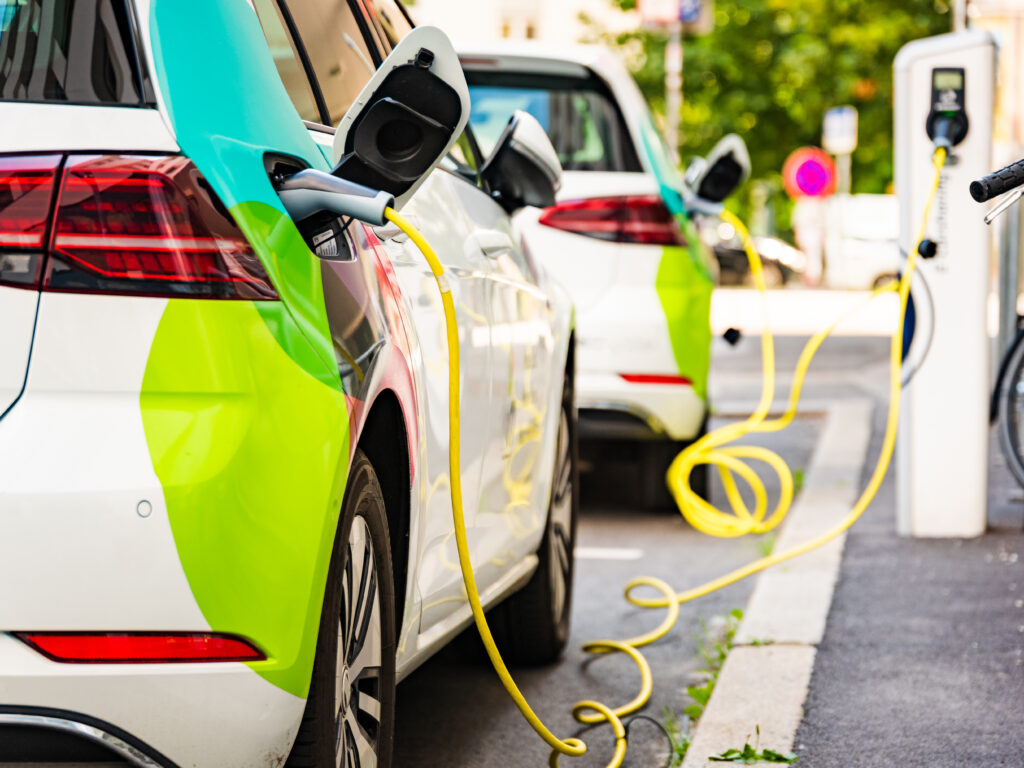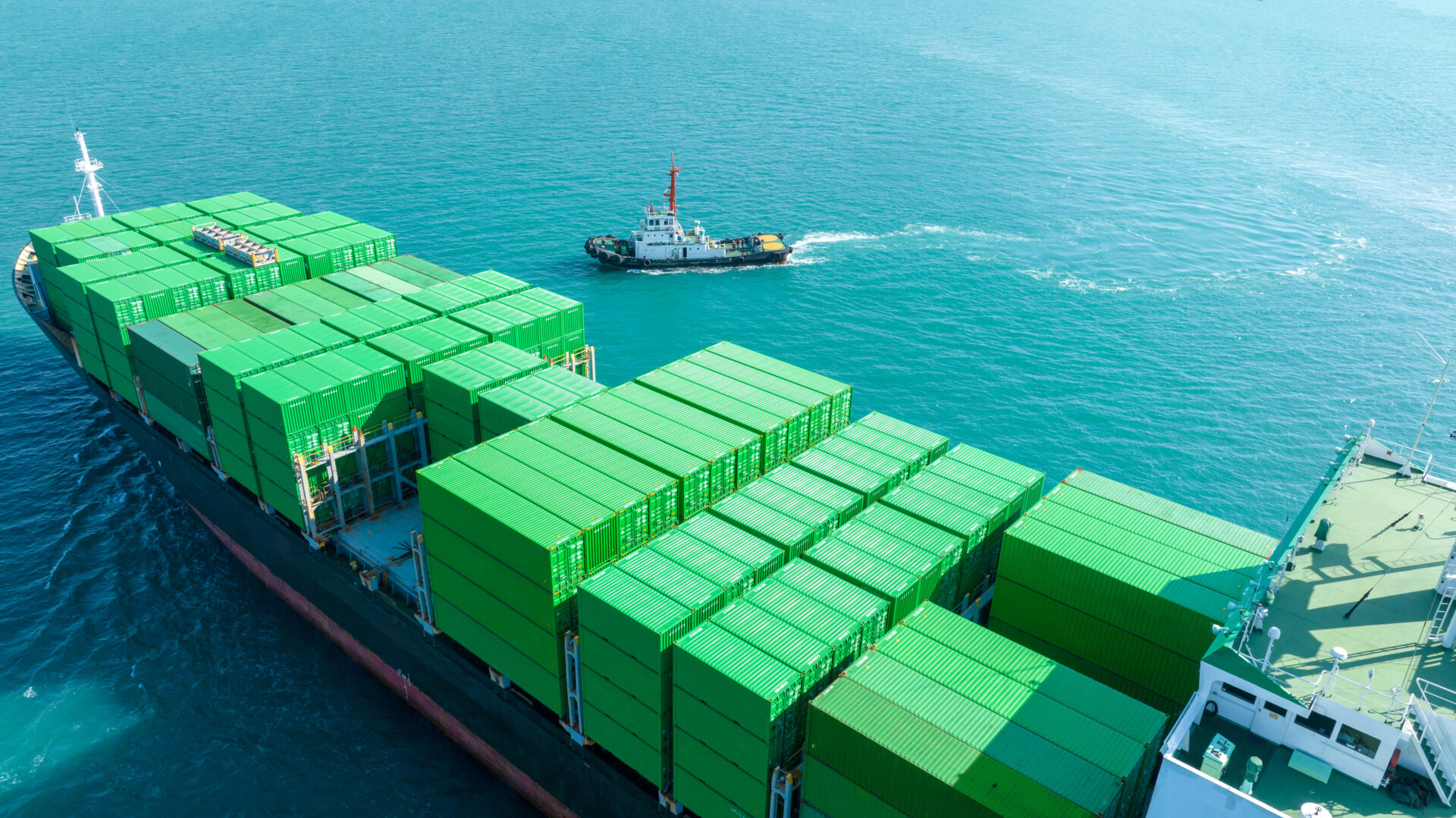
Introduction
For several centuries, sea routes have been the most economically viable and efficient mode of transportation, facilitating trade across continents. Today, they remain just as vital, with international shipping facilitating over 80% of the world’s trade. Yet, beneath its economic contribution, lies a growing environmental dilemma.
The maritime and shipping industry is liable for almost 3% of global greenhouse gas emissions, a figure that has risen by 20% throughout the last 10 years. To put this into perspective, if the industry was a nation, it would be among top ten emitters worldwide.
With emissions projected to reach 130% of 2008 levels by 2050, the challenge is clear: how can the maritime and shipping industry continue to drive economic growth while minimizing its environmental footprint?
Breaking Down the Fossil Fuel Burden
Maritime shipping is heavily dependent on fossil fuels, which have long been one of the most affordable and widely available energy sources. Large ship engines utilize a chemical process called combustion to burn this fuel and generate the energy required for propulsion.
However, this process emits significant amounts of greenhouse gases (GHG), including carbon dioxide (CO₂), along with harmful air pollutants like sulfur oxides (SOx) and nitrogen oxides (NOx). To mitigate its environmental impact, it is necessary to reduce fossil fuel use and aim for net-zero emissions.
The Role of the IMO in Paving the Path to Net-Zero
Recognizing the urgency of decarbonization, the International Maritime Organization (IMO) introduced a series of regulatory frameworks aimed at reducing emissions across the industry. In the 2018 Initial GHG Strategy, the IMO set ambitious targets to gradually reduce CO₂ emissions per transport work, establishing a long-term pathway for a more sustainable maritime sector.
This commitment was further reinforced in 2023 by introducing total annual GHG emissions reduction checkpoints, aiming for at least a 20% reduction by 2030 and 70% by 2040, with a long-term goal of achieving net-zero emissions by or around 2050.
To further support the transition, two key regulations were also introduced in the same year: the Energy Efficiency Existing Ship Index (EEXI), which mandates compliance with energy efficiency benchmarks, and the Carbon Intensity Indicator (CII), which requires ships to demonstrate continuous improvements in carbon intensity. Together, these measures lay the groundwork for a shift toward cleaner and more efficient operations.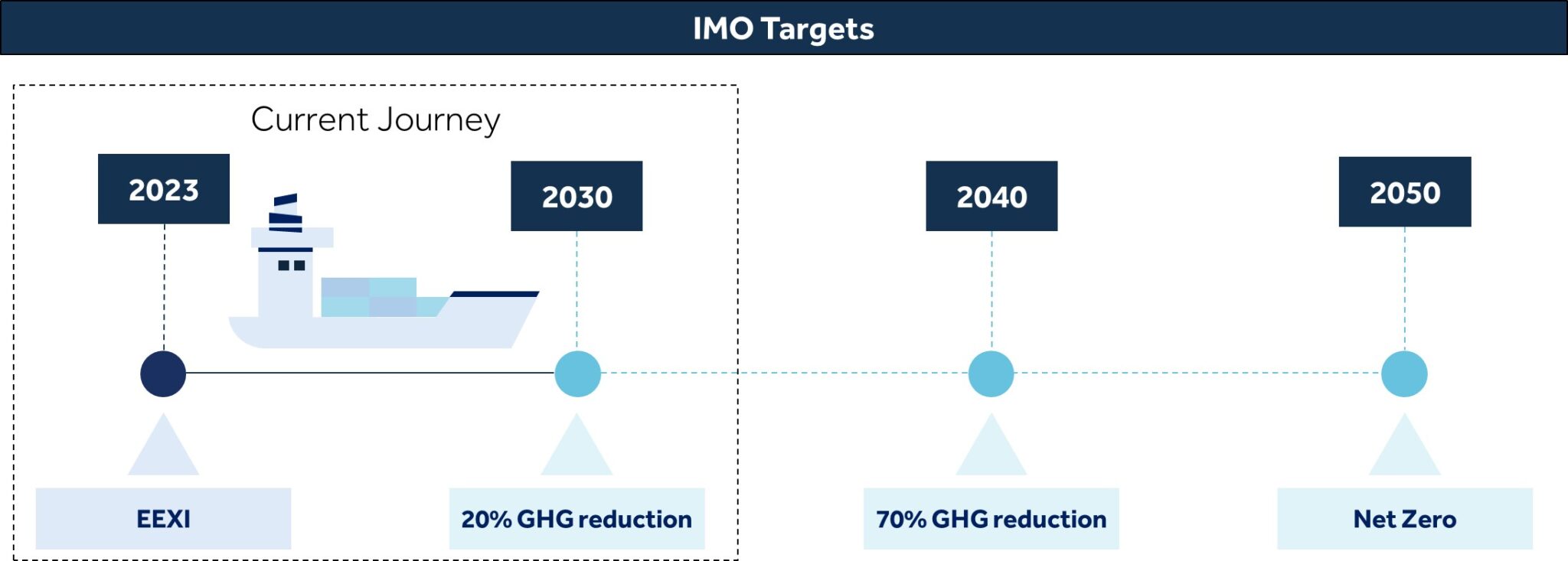
Full Scale Transition to Green Solutions: A Distant Reality?
Amidst various regulations, the maritime and shipping industry is actively exploring innovative solutions to drive decarbonization. From alternative fuels to advanced propulsion methods, various solutions are emerging as transformative tools for reducing greenhouse gas emissions.
The following infographic highlights some of the most prominent and widely discussed green solutions that can shape the future of the industry:
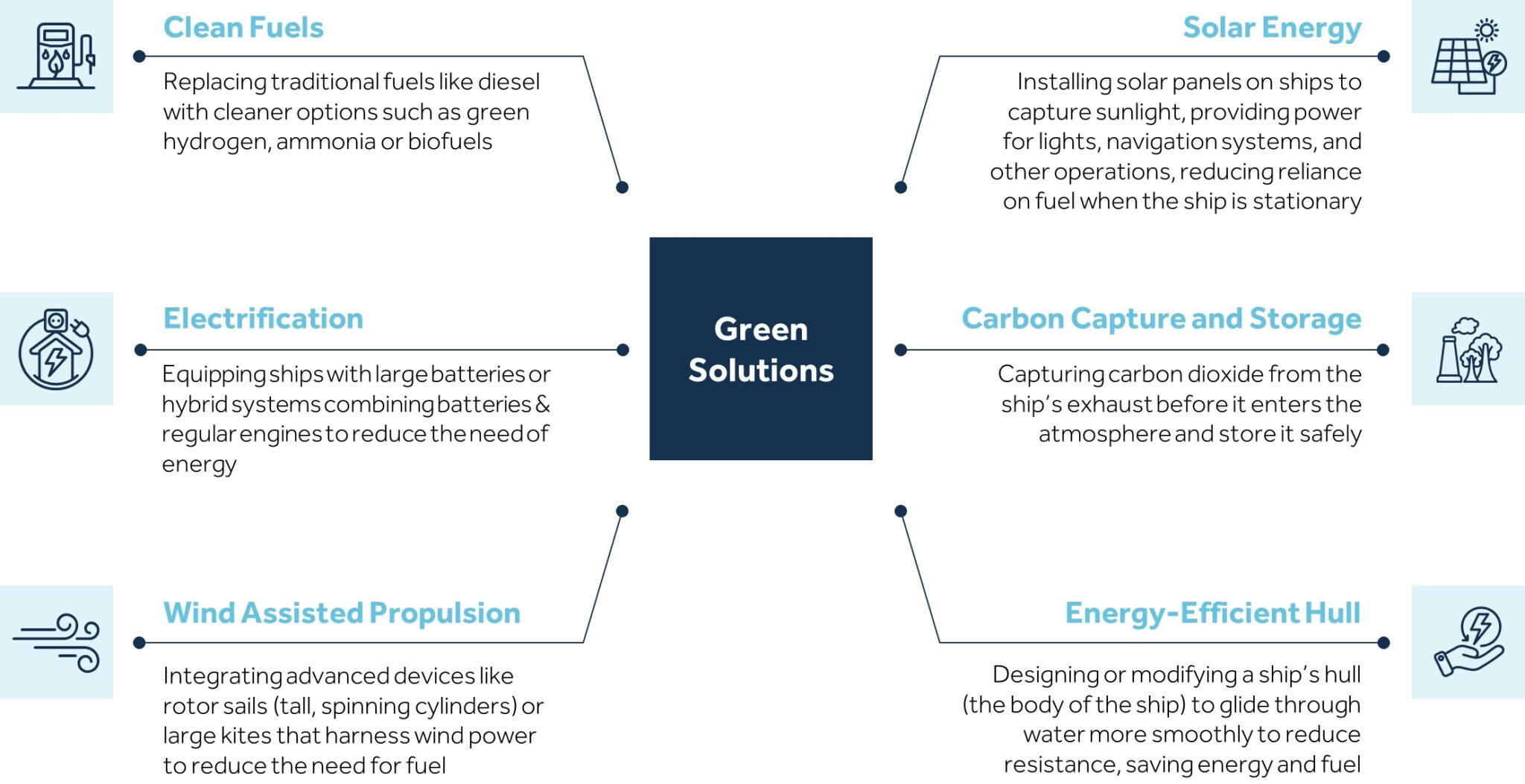 While these green solutions hold immense potential to drive sustainability, their implementation requires retrofitting existing vessels or building new ones altogether. But is it truly as simple as it sounds? The statistics suggest otherwise.
While these green solutions hold immense potential to drive sustainability, their implementation requires retrofitting existing vessels or building new ones altogether. But is it truly as simple as it sounds? The statistics suggest otherwise.
According to the UNCTAD report, as of early 2023, the average ship’s age was 22.2 years. With over half the global fleet now older than 15 years, many ships are either too old to retrofit or too young to scrap. Adding to this challenge, more than 90% of the global fleet continues to rely on conventional fuels.
Moreover, even if ship operators are willing to invest in new systems, such changes would not only disrupt existing operations but also require significant capital investment. As a result, a full-scale transition to the above-mentioned green solutions feels like a distant reality.
What if a smarter alternative existed, one that can not only optimize current operations but also design the ideal decarbonization strategy tailored to the specific needs of the fleet?
Command and Control Centers: The Smarter Alternative
Command and Control Centers (CCCs) serve as a centralized hub where the fragmented elements of maritime and shipping logistics come together. In other words, data from vessels, ports, and routes are integrated to create a unified operating picture.
Although these centers have existed for some time, their operations have evolved significantly. From simple information hubs to sophisticated integrated systems, CCCs have continually adapted to enhance data management and decision-making.
Today, their operations have become significantly more digitalized, utilizing a range of advanced technologies, all of which contribute to decarbonization in an interconnected manner. These technologies can be broadly categorized into four clusters (Inspired by World Economic Forum):
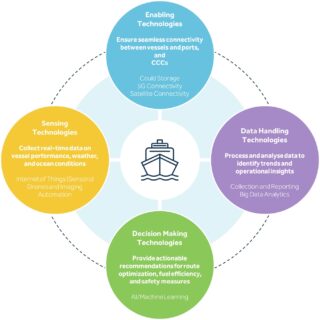
These technologies work in harmony to accelerate decarbonization, addressing both immediate challenges in the short run as well as laying the groundwork for sustained impact in the long run.
From Immediate Solutions to Future Transformation: Exploring the Role of CCCs in the Short and Long Run:
In the Short Run
The integration of advanced technologies opens a vast array of capabilities that offer practical solutions in the short term, without disrupting existing systems. These capabilities work in tandem with current operations, providing immediate improvements in operational efficiency. These capabilities include:
-
Route Optimization:
By analyzing vast amounts of historical and real-time data, CCCs identify inefficiencies in previous voyages and propose optimal routes for future journeys. Factors such as ocean currents, wind speeds, port traffic, and weather conditions are considered to plan routes that minimize fuel consumption and avoid potential delays. This capability reduces detours and idle times at ports, ensuring smoother voyages that conserve energy and cut emissions.
-
Emission Monitoring:
CCCs enable operators to track emissions in real time, providing continuous data on fuel usage and greenhouse gas output, including carbon dioxide, sulfur oxides, and nitrogen oxides. By pinpointing when and where emissions peak, operators can address inefficient practices or operational patterns that contribute to higher emissions.
-
Speed Optimization:
Balancing speed and fuel consumption is important for shipping operations. CCCs leverage real-time insights on vessel load, sea conditions, and delivery deadlines to recommend the most efficient speeds for each leg of the journey. By adjusting cruising speeds, operators can optimize fuel usage, reduce emissions, and still meet delivery schedules.
-
Trim Optimization:
A ship’s trim, or the angle at which it sits in the water, affects its resistance and fuel consumption. An improper trim increases drag, requiring more energy to maintain speed and resulting in higher emissions. CCCs calculate the ideal trim for each stage of the voyage, minimizing resistance and reducing fuel consumption.
-
Energy and Hull Performance Monitoring:
CCCs constantly monitor the health of a vessel’s hull and energy systems, picking up on early warning signals of faults that might undermine efficiency. For instance, biofouling marine growth on the hull can dramatically raise resistance and fuel usage. By detecting these problems early, operators can organize proactive maintenance, avoiding downtime and minimizing unnecessary emissions. The system also monitors the performance of propulsion systems to ensure they run at maximum efficiency throughout the vessel’s lifespan.
While this may seem too good to be true, real-world examples demonstrate that these solutions are more than just theoretical. For instance, Maersk, one of the largest shipping companies globally, demonstrated CCC’s impact by saving over 101,000 metric tons of fuel and cutting 314,000 metric tons of CO₂ emissions in 2023. This achievement was made possible through the analysis of 2.5 billion data points annually across a fleet of approximately 700 vessels.
Similarly, another shipping line, Anglo-Eastern harnessed advanced analytics to process nearly 30 million data points annually, resulting in a reduction of over 35,000 metric tons of fuel and 109,000 metric tons of CO₂ emissions in 2023.
In the Long Run
At some point, ship operators will need to take the bold step of investing in green solutions to not only sustain the impact achieved in the short run but also to accelerate progress in the long run.
However, a concern remains even now – investing in these solutions with little to zero guarantee of tangible returns could feel like a gamble. This is where the decision-making technologies of CCC can play a pivotal role.
By using digital twins, operators can test various solutions, such as alternative fuels, energy-efficient propulsion systems, and hull designs, before committing to any one choice. This helps in avoiding costs that are unnecessary by evaluating the efficiency and impact of each option in a controlled, digital environment.
For instance, different hull designs can be simulated to figure out their impact on emissions, fuel efficiency, and overall operational functional expenses. This approach permits operators to pursue very much educated choices that line up with both sustainability as well as their monetary considerations.
There have already been significant developments in these technologies, with leading OEMs like Kongsberg and ABB offering digital twin solutions specifically designed for maritime applications with a focus on optimizing vessel performance, enhancing energy efficiency, and driving sustainable operations.
Conclusion
With the maritime and shipping industry responsible for transporting more than three fourth of the global trade, the IMO’s ambitious goal of achieving net-zero emissions by 2050 is both necessary and justified. However, the path to this target is filled with challenges, including an aging fleet and the need for significant capital investments, creating a gap between ambition and reality.
Command and Control Centers (CCCs) offer a practical and scalable solution to bridge this gap by reimagining operations. Leading industry players like Maersk and Anglo Eastern have already embraced CCCs, resulting in significant reductions in fuel consumption and CO2 emissions, thereby setting a benchmark for others to follow. These early adopters demonstrate that innovation, when driven by purpose, can lead to measurable environmental and economic gains.
While the journey toward a sustainable future is still unfolding, the adoption of CCCs marks a promising start. As they continue to evolve and gain wider acceptance, CCCs are not merely tools for regulatory compliance but pivotal elements in the broader transformation of the maritime and shipping industry.
References:
- UNCTAD (2024)
- DNV (2024)
- BCG (2024)
- UNCTAD (2023)
- World Economic Forum (2023)
- Anglo Eastern (2023)
- Maersk (2023)


